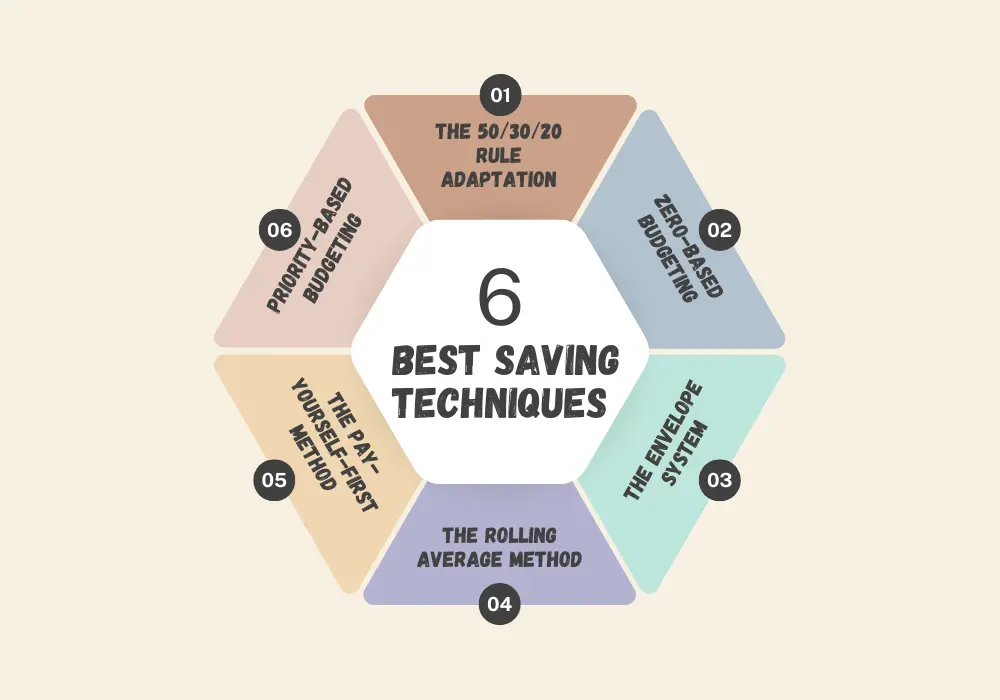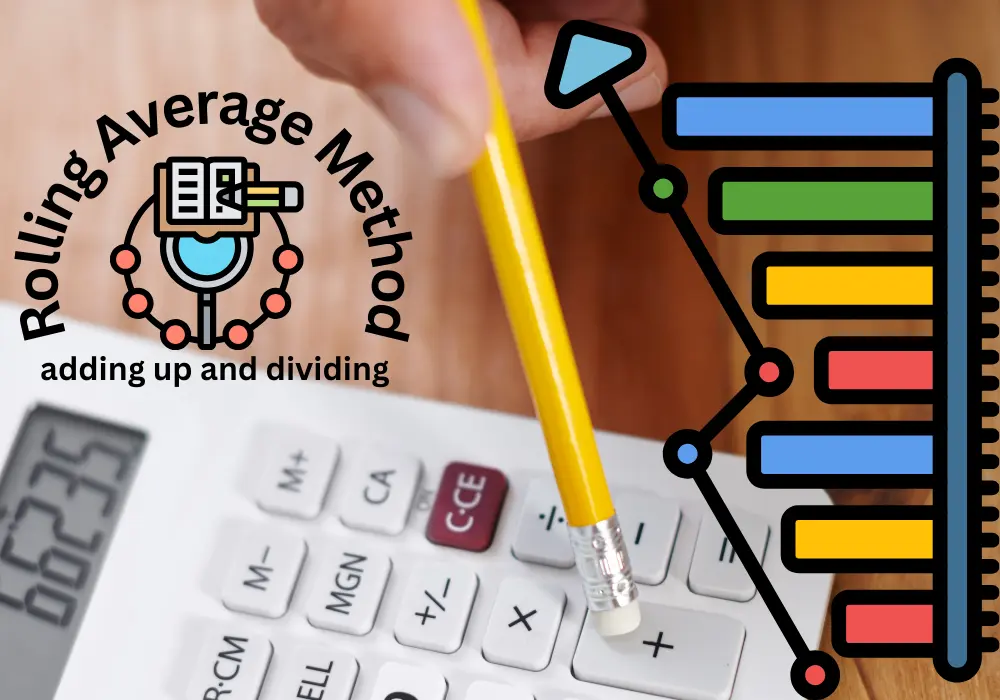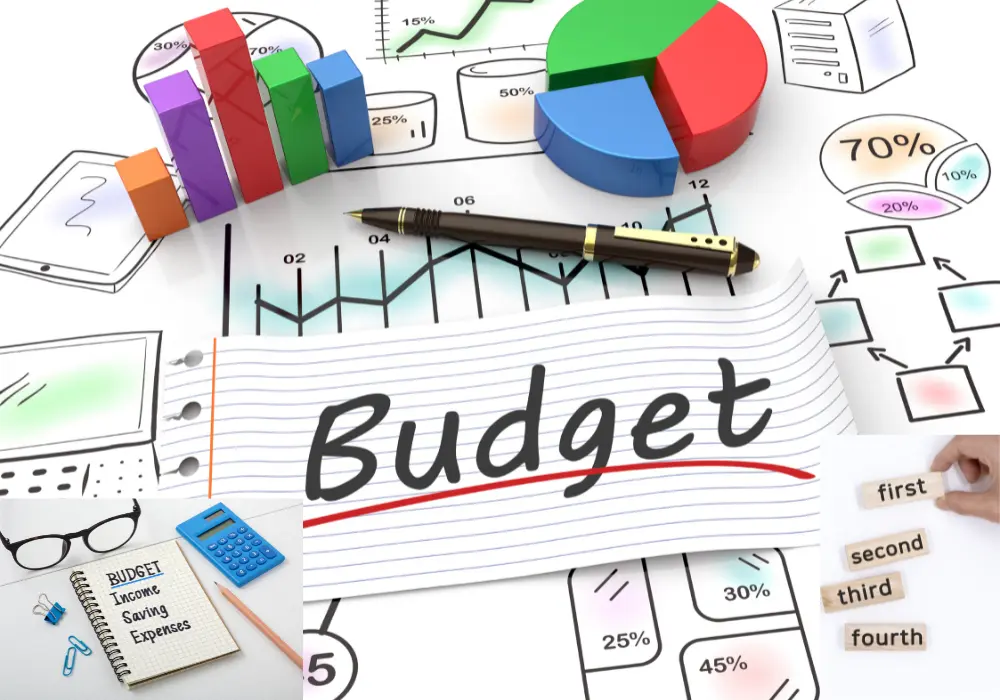For many people, creating a budget is as simple as adding up your monthly income, deducting your set expenses, and then allocating the money that’s left over to savings, debt reduction, and discretionary spending. However, this traditional strategy may not be sufficient for those with irregular income, such as small business owners, gig workers, commission-based employees, or freelancers. In order to maintain financial stability when your income varies from month to month, budgeting calls for a distinct set of tactics. We’ll look at the top budgeting techniques for properly handling erratic income in this blog.

Understanding the Challenges of Irregular Income
Since irregular income is unpredictable, it poses particular difficulties. Because of this volatility, there may be prosperous and poor financial periods, which makes it challenging to prepare for both immediate requirements and long-term objectives. Paying for necessities, building savings for the future, and handling debt become more difficult without a steady source of income.
Budgeting with irregular income requires structure and flexibility, and the ability to adjust for these changes is essential. The best budgeting techniques to aid you in navigating the ups and downs of irregular income are listed below.
1. The 50/30/20 Rule Adaptation
Overview:
A common approach to budgeting, the 50/30/20 rule states that you should set aside 50% of your income for necessities, 30% for wants, and 20% for debt reduction and savings. But it might not always be feasible to strictly follow these percentages when dealing with sporadic revenue.
.webp)
How to Adapt:
Rather than strictly adhering to these percentages, modify them in accordance with your monthly irregular income. For example, you might set aside more than 20% of your income for savings in a high-income month, and you might cut back on discretionary spending (wants) in a low-income month to make sure your basic requirements are covered.
Advantages:
- Flexibility: You can prioritize your financial obligations using this strategy, which takes into account changes in your irregular income.
- Balanced Approach: A balanced approach lets you keep some of your money for personal enjoyment while encouraging regular saving.
Problems:
- Adjustment Required: Monthly adjustments to the percentages according on your irregular income are necessary, and they call for constant focus and self-control.
2. Zero-Based Budgeting
Overview:
By allocating every dollar of your irregular income to distinct categories, zero-based budgeting ensures that, at the end of the month, your income less your expenses equals zero. Using this strategy compels you to track every dollar you spend and make thoughtful choices about how much you spend.

Adapting for Unpredictable Income:
Rather than creating your budget on a set monthly timetable, you will need to do so each time you receive money if your irregular income is unpredictable. Begin by enumerating your fixed costs, such rent, utilities, and groceries. Next, divide the remaining income between debt repayment, savings, and discretionary expenditure.
Advantages:
- Complete Control: By giving you complete financial control, zero-based budgeting enables you to give priority to the things that really matter most.
- Intentional Spending: You reduce the likelihood of financial waste by giving each dollar a purpose.
Problems:
- Effort-Consuming: This approach might take a lot of effort because it calls for thorough tracking and frequent modifications.
- Difficult in limited-Income Months: When income is limited, it can be difficult to allocate funds, which makes setting priorities difficult.
3. The Envelope System
Overview:
The envelope system is a cash-based budgeting technique in which you divide your spending into individual envelopes for things like groceries, transportation, and entertainment. You are not allowed to spend any more money in an envelope until the following budget cycle.

How to Use with Uncertain Income:
Prioritize your highest-priority expenses in your envelopes and fill them first when your income is uncertain. Assign money to your “rent” and “groceries” envelopes, for instance, before adding dollars to less important categories like “dining out” or “entertainment.”
Advantages:
- Spending Discipline: By limiting your access to finances, this strategy can assist reduce expenditures.
- Visual and Tangible: It is simpler to understand where your money is going when using the envelope system because it is a tangible system.
Problems:
- Convenient: It can be difficult to carry cash in a world where electronic payments are the standard.
- Limited Flexibility: It could be difficult to transfer money from one envelope to another in the event of unforeseen expenses.
4. The Rolling Average Method
Overview:
To establish your budget, use the rolling average method, which entails figuring out your average revenue over a predetermined time period (such as the last six months). This method aids in reducing the highs and lows associated with erratic revenue.

How Operates:
By adding up and dividing your total earnings over the last six months, you can find your average monthly income.
When creating your budget, use this average as your starting point income.
Based on your monthly real income and expenses, make any necessary adjustments to your budget.
Advantages:
- Stability: By lessening the influence of revenue variations, the rolling average method offers a more steady foundation for budgeting.
- Predictability: It enables more predictable planning, which facilitates the management of both necessary and optional spending.
Problems:
- Delayed Response: Your budget might not update right away if your income starts to trend higher or lower.
- Updates Frequently: To make sure your budget remains current, you’ll need to compute your average income on a regular basis.
5. The Pay-Yourself-First Method
Overview:
By allocating a part of your irregular income before covering other expenses, the pay-yourself-first technique prioritizes savings. This strategy makes sure that saving becomes a regular habit regardless of changes in income, which makes it especially helpful for people with irregular income.

How to Put It Into Practice:
As soon as you get paid, put aside a set amount of money (10–20%) for savings. Use the money that is left over to pay for your necessities and extras.
Advantages:
- Consistent Savings: Setting aside money for savings helps you create a safety net that will come in handy when your income is down.
- Automated Discipline: By automating this process, the temptation to forgo saving in favor of spending is lessened.
Problems:
- Tight Budgeting: If you prioritize conserving money during months of low income, you might not have as much left over for essential bills.
- Strong Commitment: Saving money continuously requires self-control, particularly when resources are scarce.
6. Priority-Based Budgeting
Overview:
Using a priority-based budget entails assigning monies to expenses based on their relative importance. Because it guarantees that your most critical financial responsibilities are always satisfied, this strategy works especially well for handling erratic revenue.

How It Operates:
- Prioritize your spending by listing the necessities first, such as shelter, food, and utilities.
- Until your money runs out, distribute your irregular income among these costs according to priority.
- Any money left over might be put into savings or areas with lower priority.
Advantages:
- Makes Sure Essentials Are Paid: Using this strategy will guarantee that your most crucial bills are always covered first.
- Flexible: It lets you modify your expenditures in accordance with your present financial circumstances.
Problems:
- May Need Sacrifices: You might need to cut back on or give up purchasing lower-priority products during months of low income.
- Continuous Re-Evaluation: Your priorities could shift over time, necessitating a periodic review of your spending plan.
In summary
While managing a budget when income is erratic can be difficult, it’s not impossible. You can take charge of your finances even in the face of uncertainty by implementing one or more of these budgeting techniques, such as the envelope system’s discipline, the flexible 50/30/20 rule, or the accuracy of zero-based budgeting. The secret is to be adaptable, to check your budget frequently, and to make necessary adjustments to make sure you’re staying stable and reaching your financial objectives.
Recall that the objective of budgeting for irregular income is to prosper in all financial circumstances, not merely get by during the hard times. You may create a strong financial foundation that meets your current requirements as well as your goals for the future by making savings a priority, controlling your spending, and making adjustments for unforeseen events.
How can I effectively build an emergency fund with irregular income?
Having an emergency fund is important when dealing with irregular income because it acts as a safety net during times of low income. Here are some tips for building an emergency fund: Prioritize Savings: Employ the “pay-yourself-first” method, which involves automatically contributing a portion of every paycheck, regardless of your income; Save Extra During High-Income Months: Set a target to save three to six months’ worth of essential expenses in your emergency fund, which will act as a buffer to cover necessary costs in the event that your income drops unpredictably.
What should I do if I consistently struggle to cover my essential expenses due to irregular income?
If you regularly struggle to pay for necessary expenses:
Evaluate and Prioritize: Make sure that your basic costs (housing, utilities, and food) are always met first by using the priority-based budgeting technique. Sort your expenses into priority lists and set aside money accordingly.
Reduce Non-Essential Expenses: Determine which expenses, like eating out, entertainment, or subscriptions, you can cut back on or stop temporarily. Redirect your savings towards your important needs.
Increase Income Sources: Consider diversifying your income streams by taking on additional work or side gigs. More financial stability and a reduction in income fluctuations may result from this.
Create a Buffer: Put most of your effort into creating a tiny cushion fund that will cover expenses for a month or two. Even a little buffer can provide some breathing room during low-income periods.

